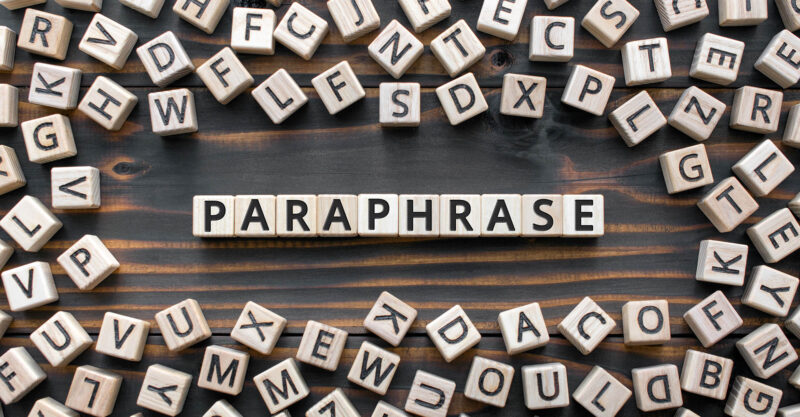Maintaining clarity and coherence in paraphrased text is essential for effective communication and understanding. When crafting written content, it’s important to strike a balance between complexity and variation in sentence structure.
Human writers often incorporate a mix of longer, more intricate sentences with shorter, more concise ones to keep the reader engaged and enhance comprehension. In contrast, artificial intelligence tends to produce text that lacks the same level of diversity in sentence length and complexity.
By employing strategies to blend these elements effectively, writers can create paraphrased text that is clear, coherent, and engaging for readers.
Tips for Maintaining Clarity in Paraphrased Text

Ensuring clarity in paraphrased text is essential for effectively communicating the intended message. To maintain coherence, it is important to vary the lengths and structures of sentences.
Incorporating both longer, more complex sentences alongside shorter, simpler ones can help convey ideas more clearly and engage readers. Additionally, paying attention to the flow of the text and ensuring smooth transitions between ideas can further enhance the clarity of paraphrased content.
By carefully crafting the structure and flow of sentences, writers can effectively communicate their message while maintaining coherence and clarity in paraphrased text.
Strategies for Ensuring Coherence in Paraphrased Writing

To ensure coherence in paraphrased writing, it is essential to maintain a balance between the complexity and variation of sentences. When paraphrasing text, it is important to incorporate a mix of sentence structures, including both longer, more elaborate sentences as well as shorter, more straightforward ones.
This variation not only helps to maintain the readers interest but also aids in conveying the original meaning of the text in a clear and concise manner. Additionally, ensuring that the flow of ideas is logical and sequential can further enhance the coherence of paraphrased writing.
By carefully selecting and organizing information, writers can create a cohesive and well-connected piece that effectively communicates the intended message.
Common Pitfalls to Avoid when Paraphrasing

When attempting to paraphrase text, there are several common pitfalls to avoid in order to maintain clarity and coherence. One common mistake is simply replacing words with synonyms without considering the overall meaning of the original text.
This can result in a jumbled mess of words that does not effectively communicate the intended message. Another pitfall is changing the structure of the sentences too drastically, which can lead to confusion for the reader.
It is important to strike a balance between staying true to the original text and expressing the ideas in a clear and coherent way. Additionally, be wary of using automated paraphrasing tools that may not capture the nuances of the original text.
By being mindful of these pitfalls, you can ensure that your paraphrased text is both accurate and easy to understand.
Conclusion
In conclusion, maintaining clarity and coherence in paraphrased text is essential for effective communication and ensuring the original meaning of the content is preserved. By using paraphrasing techniques such as changing sentence structures, vocabulary, and phrasing, writers can avoid plagiarism and improve the readability of their work.
Remember to always reference the original source and use a reliable paraphraser tool if needed. With practice and attention to detail, anyone can master the art of paraphrasing and produce high-quality, engaging content.


